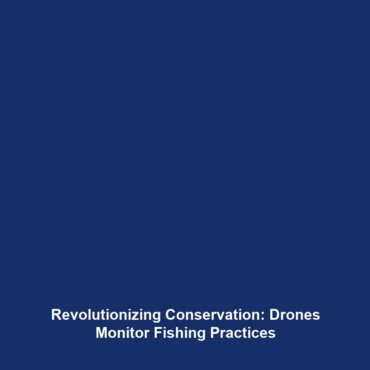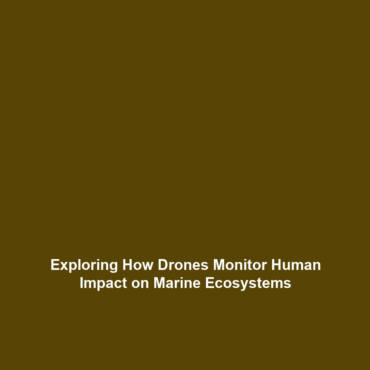The Use of Drones for Monitoring Fishing Practices and Illegal Activities
Introduction
The advent of drones has revolutionized numerous industries, and one of the most promising applications is in the realm of environmental conservation. Specifically, drones play a crucial role in monitoring fishing practices and addressing illegal activities like whaling or overfishing. With their ability to cover vast areas and gather real-time data, drones not only help ensure sustainable fishing but also serve as a deterrent against unlawful practices. This article delves into the significance of using drones for monitoring fishing practices within the broader context of Drones in Science.
Key Concepts
Understanding the use of drones for monitoring fishing practices requires a look into several key concepts:
- Remote Sensing: Drones leverage advanced sensors and imaging technology to monitor marine ecosystems from above.
- Data Collection: Drones can collect valuable data regarding fish populations, their habitats, and the extent of fishing activities.
- Real-Time Monitoring: This technological advantage allows for immediate reporting and response to illegal activities.
These principles underscore the relevance of drones in maintaining ecological balance and enforcing laws against overfishing and whaling, thus integrating seamlessly into the category of Drones in Science.
Applications and Real-World Uses
The application of drones to monitor fishing practices is diverse and impactful:
- Surveillance of Marine Areas: Drones are used to observe fishing boats and detect illegal fishing activities in protected areas.
- Species Tracking: Researchers utilize drones to track specific fish populations, ensuring compliance with fishing regulations.
- Marine Habitat Mapping: Drones assist in mapping critical habitats affected by overfishing, allowing for targeted conservation efforts.
These applications of drones highlight how this technology contributes significantly to sustainable practices in Drones in Science.
Current Challenges
Despite their benefits, several challenges hinder the widespread implementation of drones in monitoring fishing practices:
- Regulatory Issues: The use of drones in some regions is restricted by local laws regarding airspace and surveillance.
- Technological Limitations: Drones currently have limitations related to battery life and payload capacity, restricting operational range and data quality.
- Data Privacy Concerns: The potential for privacy infringement raises ethical questions regarding the monitoring of fishing activity.
These challenges of monitoring fishing practices with drones must be addressed to maximize their effectiveness.
Future Research and Innovations
The future of drone technology in monitoring fishing practices looks promising with several innovations on the horizon:
- Advanced AI Integration: Upcoming research focuses on integrating AI to improve data analysis and forecasting.
- Improved Durability: Next-gen drones are being developed with enhanced battery life and weather resistance to extend operational capabilities.
- Collaborative Networks: Scientists are exploring collaborative platforms that utilize data from multiple drone sources for broader impact.
Such innovations will significantly enhance the application of drones in maintaining sustainable fishing practices.
Conclusion
The use of drones for monitoring fishing practices and addressing illegal activities both promote sustainability and protect marine ecosystems. As advancements in drone technology continue to emerge, the role of drones in science will expand further, offering new avenues for conservation efforts. To explore more about marine conservation and technological innovations, visit our related articles on the impact of drones in wildlife monitoring and the future of environmental science.

